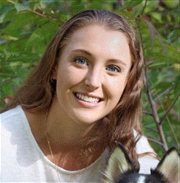Tutor HuntResources Geography Resources
Earthquakes
Earth`s Interior
Date : 08/06/2020
Author Information

Uploaded by : Lara
Uploaded on : 08/06/2020
Subject : Geography
Earth`s Interior ;How can we possibly know the structure &; composition of the Earth’s interior ?We can use samples of deep crust and upper mantle e.g. xenoliths in some lavaWe can look at diamondsEarthquakes ;Can we figure out what`s inside the earth with an analogy ?Yes we can you a baseball and a density calculation to work our what inside without cutting it open.We use this same method with the planet. ;EarthquakeSeismology: the study of earthquakesEarthquake: release of energy from rocks that were lockedEarth`s lithosphere: rocks are cold and elastic ;Elastic rebound theory:The brittle lithosphere deforms elastically as a result of stress: friction prevents slip along locked zone of faultWhen strain exceeds frictional strength, fault slipsEnergy is released-earthquake happens! Generates permanent offset, heat, seismic waves (radiating energy). Rocks bounding fault return to previous shape. ;Stress is what you apply to an objectStrain is the shape that it takes as a result of applied stress ;Seismograph records earthquakes which makes seismogram ; ;(the point lines on paper) ;Other seismic wave sourcesMeteorite impacts ;Nuclear testsMining explosionsLandslides/avalancheVolcanic activity ; ;Where do earthquakes occur?Earthquakes occurs along faults and at plate boundariesLinear offsets help you identify if you have faults in the area. (faults are area not on plate boundaries ;Earthquake anatomyFault surfaceSeismic wave ;Focus/hypocenterEpicenter ; ;USArray measure earthquakes in the USAAlso helps us understand more about interior of the earthLooks at how different types of rocks will react to earthquakes ;Seismic waves2 classes of wavesBody wavesSurface waves4 types of waves ;P-wavesS-wavesRayleigh wavesLove waves ;Body wavesPrimary body wave (P-wave) compresses material; fastestSecondary body wave (S-wave) shears material, can’t travel through liquids ;SeismologySeismic waves move at different velocities through rocks with different properties: density, elasticity, composition, pressure, and temperature.At boundaries between materials with different properties, seismic waves change speed and direction: reflection &; refraction ;The Crust-Mantle BoundaryThe Moho (Mohorovicic Discontinuity), discovered in 1909 by Andrija Mohorovicic ;Separates crustal rocks from underling mantle ; ;The Core-Mantle BoundaryDiscovered in 1914 by Beno GutenbergBoundary between the mantle and the coreObserved the P-wave shadow zone ;Seismic waves were proof of the core ;The Core-Core BoundaryDiscovered in 1936 by Inge LehmannBoundary between the inner core and the outer core (Lehmann Discontinuity)Observed the S-wave shadow zoneCore has liquid outer core so the S-waves cannot travel through ; ;Rayleigh waveVertical ground displacementUp and down movementOccurs at the surface ;Slower than S and P waves ;Love wavesHorizontal ground displacement ;Side to side movement ;Occurs at the surface ;Most destructive wave ; ;Locating earthquakeIf S and P waves are close together earthquake is closeIf S and P waves are further apart the earthquake is further away ;How do we measure earthquake size?You’ve probably heard of the Richter scale ;Developed for use in CaliforniaBad for very large eventsYou may have also heard of the Mercalli Scale ;How do we measure earthquake size?Mercalli scaleSubjective assessment of damageHow did the shaking feel?Range of I-XII ;How do we measure earthquake size?We don’t usually use the Mercalli or Richter scale to describe earthquake size!Moment Magnitude (Mw): related to the amount of slip and the length of fault that slips: energy releasedScale is logarithmic (up in magnitude increases 10 fold) ;Largest ever recorded: 9.5 in Chile, 19602nd largest: (Largest US Earthquake): Alaska 1964 Good Friday Earthquake, Magnitude 9.43rd largest: Indian Ocean 2004. Indonesia/Sumatra (9.2-9.3) ;What is the highest we could go on this scale?Determined by:length of the fault segment that slipsHow far it slips ;Mw 16 would split Earth in half!HOWEVER: we don’t have any faults that long: they have bends and areas where they slip aseismically. ;Earthquake Hazards/ What harms peopleShakingLiquefactionTsunamisEarthquakes don’t hurt people, buildings collapsing and tsunamis hurt people. ;What mattersDepth of earthquake (shallow = bad)Intensity and duration of vibrations (more intense shaking for longer = bad)Nature of the material that structure rests on (unconsolidated = bad)Design of structureQuality of construction ;ShakingCaused by surface wavesWhat we try to quantify with the Mercalli Index: structural damage to buildings and what people feel ;LiquefactionLoss of ground cohesion due to increase in pore pressure of fluid.Occurs in saturated soils during earthquake shaking. Pore pressure increases and soil particles can move with respect to each other. ;TsunamisGiant wall of water created as a result of earthquakes ;New Madrid Fault Zone3 big earthquakes 1811,1812 (within 2 months)Made Mississippi flow backwardsRang church bells in Boston, widespread shaking, 7.8 magnitude.Used Mercalli scale ; ;Can we predict earthquakes? No but we can try to forecast them ;Earthquake forecastingLocked sectionsHistorical magnitudesHistorical events: recurrence intervals on San Andreas of big EQs 100-300 yearsSince 1950: all but 2 big events in California occurred on unknown faults or faults thought to be inactive (we knew Parkfield and Loma Prieta—didn’t know Landers, Hector Mine, El Mayor, Northridge, Kern County) ;SAFOD - Drill into San Andreas fault to measure seismic activity ;Can we cause earthquakesYes associated with fracking ;Inject fluid into deep wells to dispose of itOne big one: 5.7, Oklahoma, 2011How this generates earthquakesWe directly inject fluid along faultsWe change loading on faults
This resource was uploaded by: Lara
